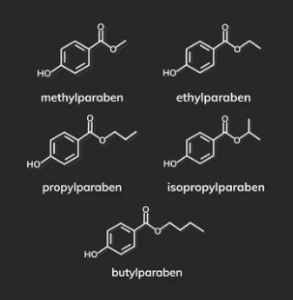Separating Hype from Reality in Cosmetic Safety

The beauty and personal care industry has seen a surge in consumer interest in recent years, with an increasing focus on product ingredients and their potential impact on health. One particular group of ingredients that has drawn considerable attention is parabens. Used as preservatives in cosmetic products, parabens have been a subject of controversy and concern due to claims about their potential health effects. In this blog, we aim to explore the scientific evidence surrounding parabens’ safety and health implications, separating hype from reality to provide a comprehensive understanding of their role in cosmetics.
Parabens, including methylparaben, ethylparaben, propylparaben, and butylparaben, have been widely used in the cosmetics industry for decades. Their antimicrobial properties make them effective in preventing the growth of bacteria, mold, and yeast in various beauty and personal care products, ranging from skincare items to shampoos and deodorants. The low cost and broad-spectrum effectiveness of parabens have made them popular choices for cosmetic formulations.

One of the main concerns surrounding parabens is their potential endocrine-disrupting properties. Parabens can mimic estrogen, a hormone that regulates various physiological processes in the body. Some studies have suggested that exposure to certain parabens might interfere with the endocrine system, potentially affecting hormone regulation and breast health. However, the significance of this potential disruption remains a subject of debate among scientists and regulatory agencies.
It is important to note that the Cosmetic Ingredient Review (CIR), an independent expert panel that assesses the safety of cosmetic ingredients in the United States, has reviewed parabens multiple times over the years. The CIR has consistently concluded that parabens are safe to use in cosmetic products at low concentrations (usually up to 1%) and that they do not pose a health risk to consumers.
Numerous scientific studies have been conducted over the years to evaluate the safety of parabens in cosmetic products. The vast majority of these studies have not found conclusive evidence linking parabens in cosmetics to adverse health effects when used within the recommended concentration limits. These findings align with the conclusions of regulatory agencies and expert panels that have extensively reviewed parabens.
One critical aspect of these studies is the assessment of paraben exposure levels. To evaluate potential health risks, scientists consider the actual exposure levels experienced by consumers in real-world scenarios. This involves estimating the amount of parabens that individuals are exposed to through cosmetic use and comparing it to safety thresholds established by regulatory agencies.
The European Commission’s Scientific Committee on Consumer Safety (SCCS) and other regulatory authorities have set acceptable daily intake (ADI) levels for certain parabens. The ADI represents the amount of a substance that an individual can be exposed to daily over a lifetime without any appreciable health risk. Studies evaluating paraben exposure in cosmetic use have consistently found that actual exposure levels are well below established ADI values, supporting the safety of parabens when used within approved limits.
It is important to address the controversy surrounding parabens’ potential link to breast cancer. Some studies have reported detecting parabens in breast tissue samples, leading to concerns about their association with breast cancer development. However, it is essential to note that the mere presence of parabens in tissues does not indicate causation or a direct link to breast cancer.
Breast tissue can be exposed to parabens through various routes, including diet, cosmetic use, and other environmental sources. It is challenging to pinpoint the specific source of parabens found in breast tissue samples, and studies have not conclusively demonstrated that parabens from cosmetics cause or promote breast cancer development.
To date, large-scale epidemiological studies examining the association between paraben exposure from cosmetic use and breast cancer risk have not provided definitive evidence of a causal relationship. The American Cancer Society, the National Cancer Institute, and other cancer organizations have stated that there is no clear or direct evidence linking the use of cosmetic products containing parabens to an increased risk of breast cancer.
It is crucial to consider the context and limitations of these studies. Detecting a substance in a tissue sample does not necessarily indicate a causal relationship with a disease. The sources of parabens found in breast tissue are not definitively attributed to cosmetics, as parabens are also present in other consumer products, food, and the environment. Moreover, the studies have not established a direct link between parabens in cosmetics and breast cancer.
Regulatory agencies worldwide, including the U.S. Food and Drug Administration (FDA), the European Commission’s Scientific Committee on Consumer Safety (SCCS), and Health Canada, have extensively evaluated the safety of parabens. These agencies have consistently concluded that parabens are safe for use in cosmetics at approved concentrations.
In response to consumer concerns, some manufacturers have voluntarily removed parabens from their formulations and replaced them with alternative preservatives. While this has led to a rise in “paraben-free” products, it is essential to remember that parabens, when used within established safety limits, have been deemed safe by regulatory bodies.
As consumers, making informed choices is paramount. It is essential to consider the scientific evidence and the consensus among regulatory authorities regarding the safety of parabens in cosmetic products. Consumers with specific health concerns or preferences may choose paraben-free options, but it is crucial to remember that regulatory agencies worldwide have deemed parabens safe for use in cosmetics at approved levels. By understanding the facts and separating hype from reality, consumers can make informed decisions that align with their personal values and preferences when it comes to cosmetic safety.

